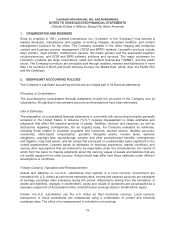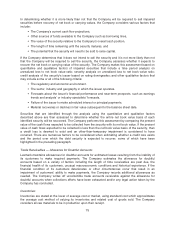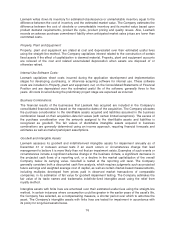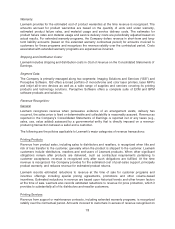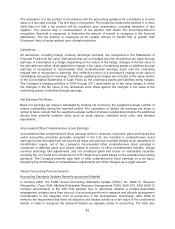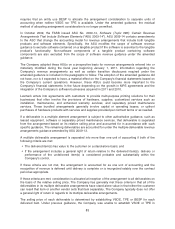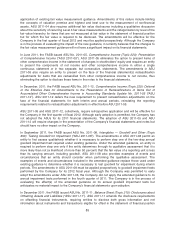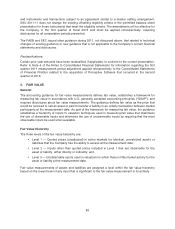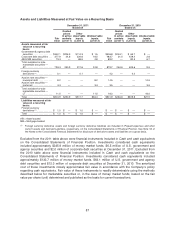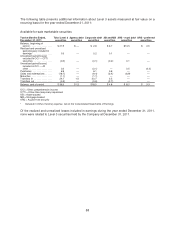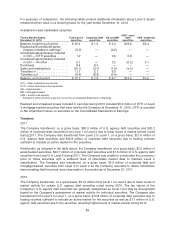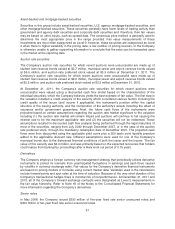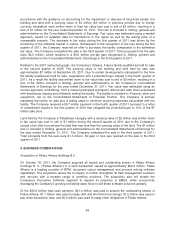Lexmark 2011 Annual Report Download - page 87
Download and view the complete annual report
Please find page 87 of the 2011 Lexmark annual report below. You can navigate through the pages in the report by either clicking on the pages listed below, or by using the keyword search tool below to find specific information within the annual report.requires that an entity use BESP to allocate the arrangement consideration to separate units of
accounting when neither VSOE nor TPE is available. Under the amended guidance, the residual
method of allocating arrangement consideration is no longer permitted.
In October 2009, the FASB issued ASU No. 2009-14, Software (Topic 985): Certain Revenue
Arrangements That Include Software Elements (“ASU 2009-14”). ASU 2009-14 contains amendments
to the ASC that change the accounting model for revenue arrangements that include both tangible
products and software elements. Specifically, the ASU modifies the scope of software revenue
guidance to exclude software contained on a tangible product if the software is essential to the tangible
product’s functionality. Non-software components of a tangible product containing software
components are also excluded from the scope of software revenue guidance under the amended
guidance.
The Company adopted these ASUs on a prospective basis for revenue arrangements entered into or
materially modified during the fiscal year beginning January 1, 2011. Information regarding the
Company’s revenue arrangements as well as certain transition disclosures required under the
amended guidance is included in the paragraphs to follow. The adoption of the amended guidance did
not have, nor is it expected to have, a material effect on the Company’s financial statements based on
the Company’s current operations. However, these ASUs could become more important to the
Company’s financial statements in the future depending on the growth in MPS agreements and the
integration of the Company’s software businesses acquired in 2011 and 2010.
Lexmark enters into agreements with customers to provide multi-purpose printing solutions for their
businesses that often involve the provisions of hardware, supplies, customized services such as
installation, maintenance, and enhanced warranty services, and separately priced maintenance
services. These bundled arrangements generally involve capital or operating leases, or upfront
purchases of hardware products with services and supplies provided per contract terms or as needed.
If a deliverable in a multiple element arrangement is subject to other authoritative guidance, such as
leased equipment, software or separately priced maintenance services, that deliverable is separated
from the arrangement based on its relative selling price and accounted for in accordance with such
specific guidance. The remaining deliverables are accounted for under the multiple-deliverable revenue
arrangements guidance amended by ASU 2009-13.
A multiple deliverable arrangement is separated into more than one unit of accounting if both of the
following criteria are met:
• The delivered item(s) has value to the customer on a stand-alone basis; and
• If the arrangement includes a general right of return relative to the delivered item(s), delivery or
performance of the undelivered item(s) is considered probable and substantially within the
Company’s control.
If these criteria are not met, the arrangement is accounted for as one unit of accounting and the
recognition of revenue is deferred until delivery is complete or is recognized ratably over the contract
period as appropriate.
If these criteria are met, consideration is allocated at inception of the arrangement to all deliverables on
the basis of the relative selling price. The Company has generally met these criteria in that all of the
deliverables in its multiple deliverable arrangements have stand alone value in that either the customer
can resell that item or another vendor sells that item separately. The Company typically does not offer
a general right of return in regards to its multiple deliverable arrangements.
The selling price of each deliverable is determined by establishing VSOE, TPE or BESP for each
delivered item. Under previous guidance, the Company was unable to establish VSOE or TPE in
83


